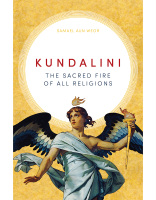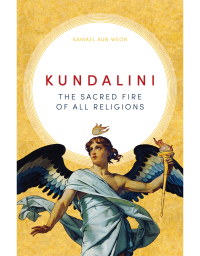As a response to Kundalini Yoga by his friend Swami Sivananda (1887–1963), Samael Aun Weor published Mysteries of the Fire in 1955. It was his fourteenth book in five years, and continued the themes of his most recent writings, notably Treatise of Sexual Alchemy (1954), a highly detailed and challenging book, especially for any reader not already well-versed in alchemical terms and symbolism. Samael Aun Weor did not spoon-feed the reader, or tiptoe into the waters of esotericism; instead, he plunged the reader right into the deepest waters, and kept going... He did the same with Mysteries of the Fire, except one needed to know the Sanskrit terms and structures of Yoga. The first page is packed with Sanskrit words; we can only imagine how the average reader in 1955 would have understood it, as Yoga was only just starting to enter the public eye.
Years ago, we published the first English edition of this book as it had been written, save for the title: in the internet age, we felt that the title Kundalini Yoga would attract more readers than Mysteries of the Fire would. Yet the content was simply too difficult for readers. That first page was really tough.
In his later writings, Samael Aun Weor developed a much more approachable style; he was still equal parts ferocious and insightful, but also personable, accessible, and deeply compassionate. He took more time to explain things to his readers, and guide them on towards deeper subjects. So, we have brought that gentler pace into this edition. We have added a Prologue of a few of his lectures, more than one hundred footnotes, and an extensive glossary. With all of this, you will be better prepared for the journey through The Mysteries of the Fire. In fact, by understanding it better, the journey will be even more powerful than it would have been otherwise.
We wish you Godspeed.
Mantra Pronunciation
In this book the author provides mantras for our benefit. Chanting or repetition of sacred sounds is universal in all religions. In Sanskrit, these sounds are called mantras, and their repetition is called japa.
Generally speaking, the sounds in mantras are pronounced using the ancient roots (Latin, Greek, Hebrew, Sanskrit, etc):
- I: as the ee in “tree”
- E: as the eh in “they”
- O: as the oh in “holy”
- U: as the u in “true”
- A: as the ah in “father”
- M: extended as if humming, “mmmmm”
- S: extended like a hiss, “sssss”
- CH: if the word is Latin, pronounced as k. If the word is Hebrew, pronounced as a scrape in the back of the throat, as in “Bach”
- G: In most mantras, G is pronounced as in “give”
Should Mantras be Spoken Aloud or Silent?
“...the verb is of triple pronunciation and that it endows three norms: verbal, mental, and conscious. One can articulate with the creative larynx, one can vocalize with his thought, and one can vocalize with the superlative consciousness of the Being.” –Samael Aun Weor, Esoteric Medicine and Practical Magic
“There are three ways that one learns to use a mantra, to repeat prayers or sounds. They are quite simple: aloud, quietly, or silently.
Vaikhari Japa: verbal, loud
Upamshu Japa: whispered or hummed
Manasika Japa: mental, silent, without moving.” –the lecture Yoga of Devotion
“The fruits of whispered japa are a thousand times more powerful than the verbal japa, and the fruits of the silent, mental japa are hundreds of thousands of times more powerful than the verbal japa. Mental japa can even be kept up while at work.” –Swami Sivananda







